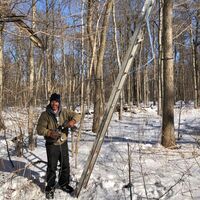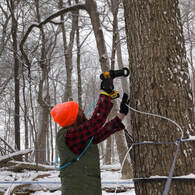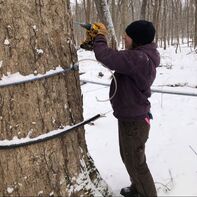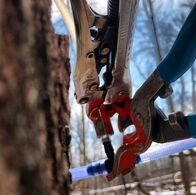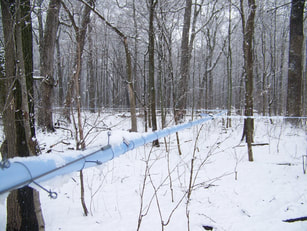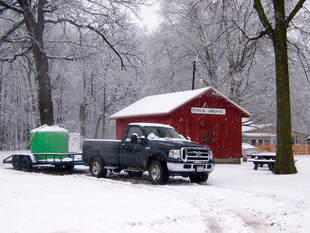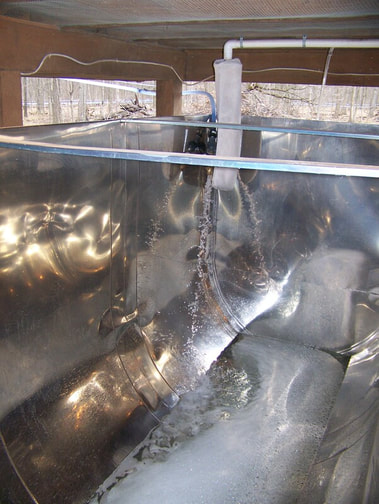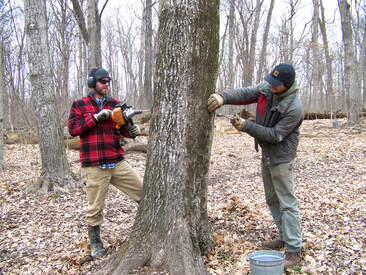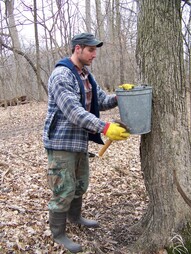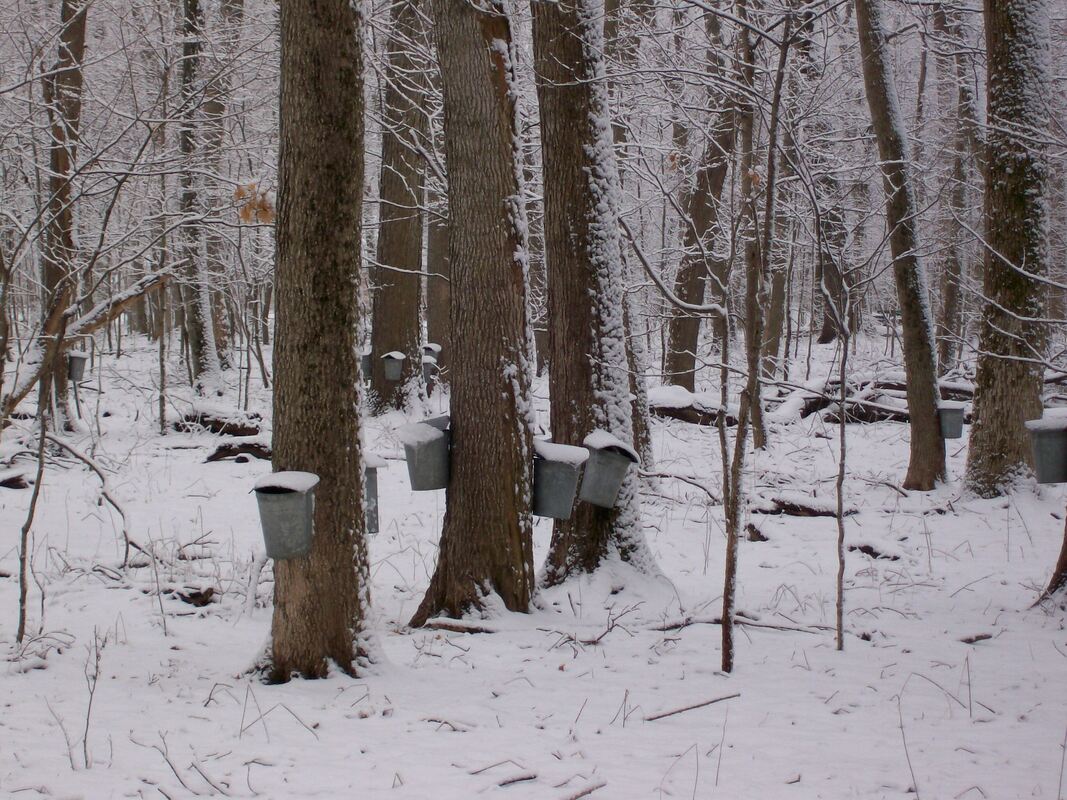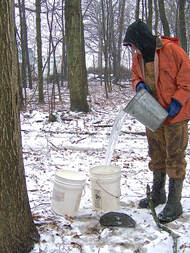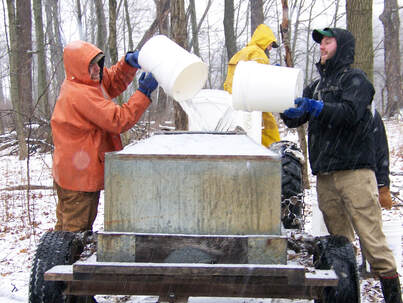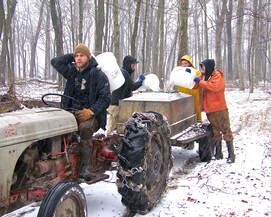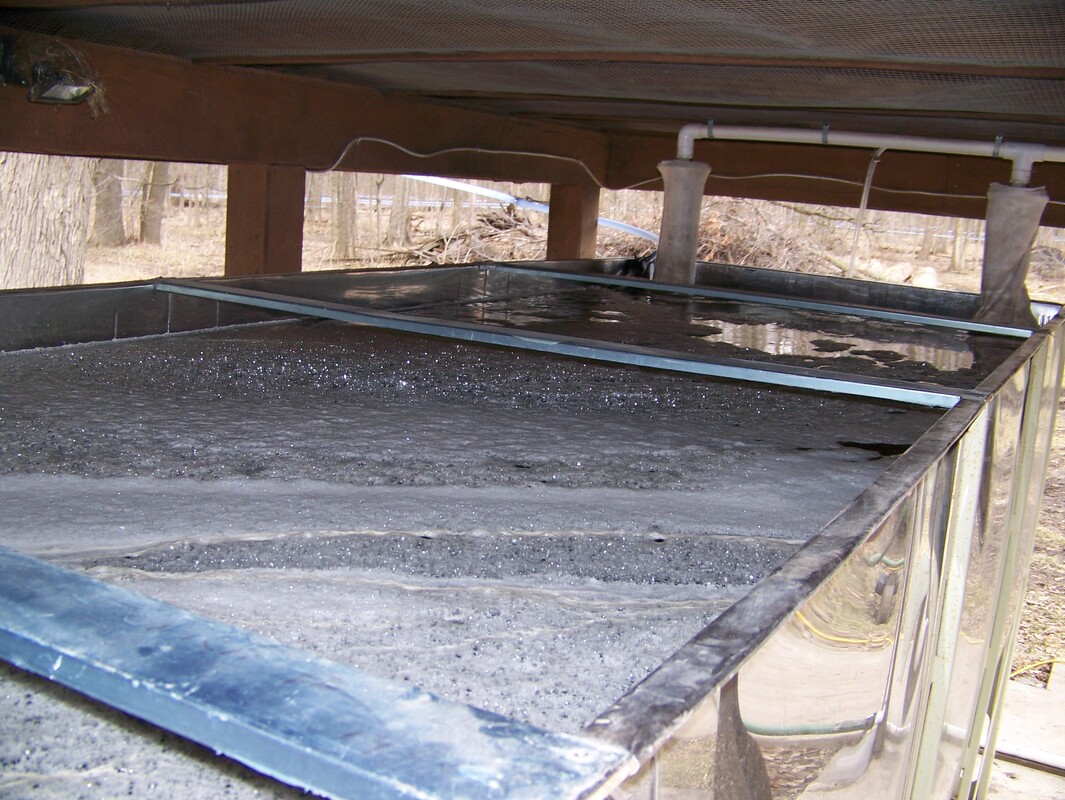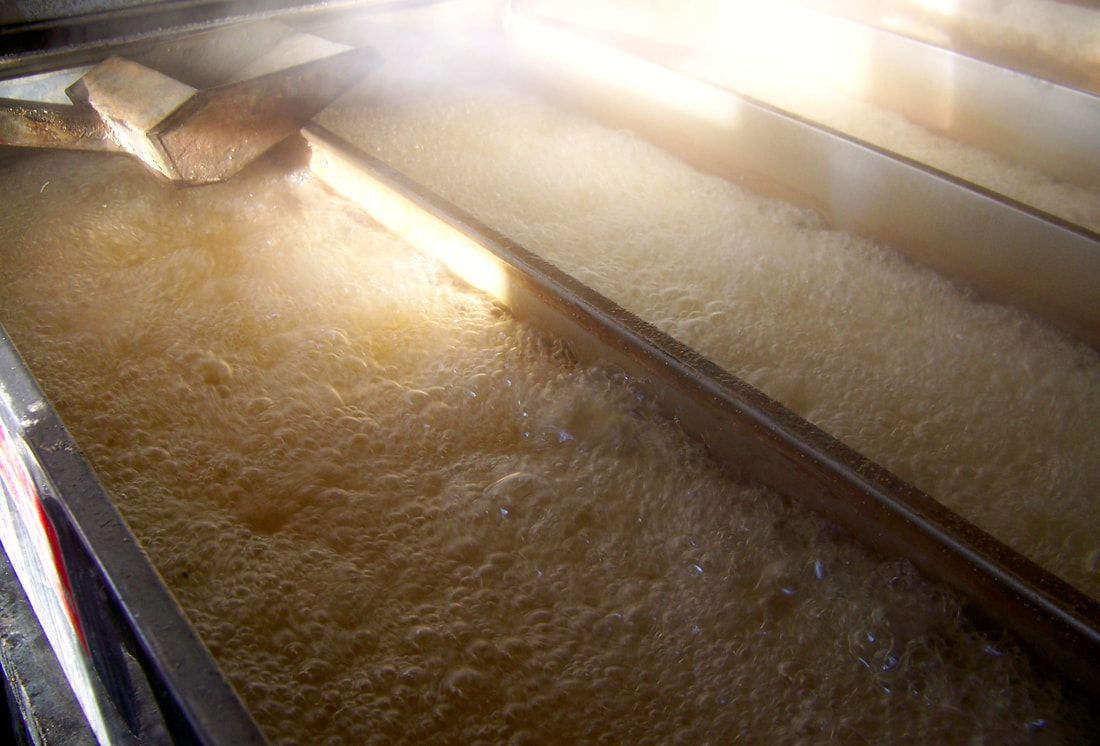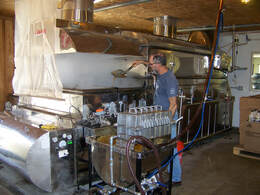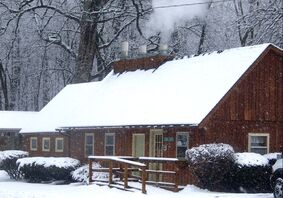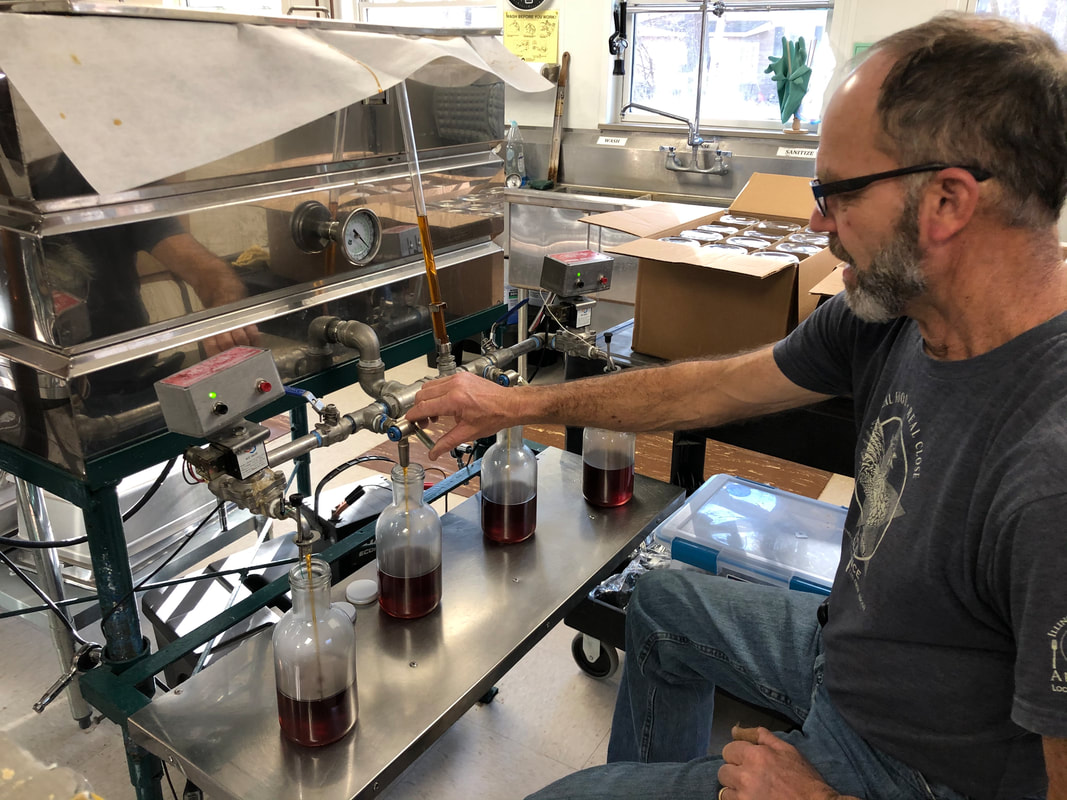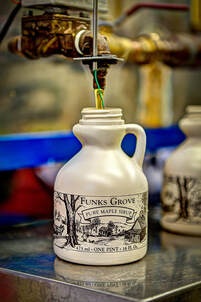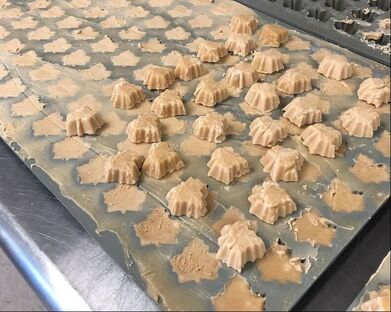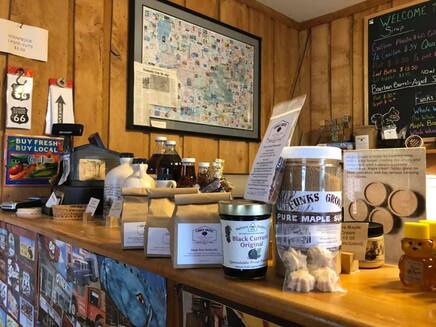Background Information
Pure maple sirup is the product of an evaporation process by which most of the water is removed from the sap collected from a sugar maple tree. Sap is a clear liquid containing sugars and minerals that serve as a tree’s food. Depending on how sweet the sap is, it can take 35 to 50 gallons of sap to produce one gallon of pure maple sirup.
During the winter, the sap is stored in a tree’s roots. Once the weather turns warmer, a freezing-thawing cycle begins in which temperatures rise above the freezing mark during the day and drop below freezing at night. During this cycle, sap flows to the tree’s branches to nourish the developing leaf buds. It is during this flow that sirup producers are able to capture the sap. In central Illinois, this cycle usually occurs in mid to late February and lasts until the middle of March. Although the cycle also occurs in the fall, sirup is not produced from this sap because it is not as sweet as the spring sap.
Maple trees are ready to be tapped when they are about 40 years old, or at least 14 inches in diameter. For every 6 inches of diameter, a tree can support an extra tap, but no more than two taps are placed in a single tree. Only a small portion of the tree’s sap is collected, and the tree naturally heals over in the places where holes were drilled.
During the winter, the sap is stored in a tree’s roots. Once the weather turns warmer, a freezing-thawing cycle begins in which temperatures rise above the freezing mark during the day and drop below freezing at night. During this cycle, sap flows to the tree’s branches to nourish the developing leaf buds. It is during this flow that sirup producers are able to capture the sap. In central Illinois, this cycle usually occurs in mid to late February and lasts until the middle of March. Although the cycle also occurs in the fall, sirup is not produced from this sap because it is not as sweet as the spring sap.
Maple trees are ready to be tapped when they are about 40 years old, or at least 14 inches in diameter. For every 6 inches of diameter, a tree can support an extra tap, but no more than two taps are placed in a single tree. Only a small portion of the tree’s sap is collected, and the tree naturally heals over in the places where holes were drilled.
Step-by-Step Process
|
In January, work begins to repair, replace, and retension tubing lines damaged by fallen trees and curious critters during the off-season. Trails are cleared of fallen trees, branches, and brush. When the weather starts to shift toward warmer days with freezing temperatures at night, usually mid-February, the tubing lines are flushed to prepare for the first sap flow.
Tapping begins by drilling holes with a 5/16-inch diameter 1½ inches into the trees in the areas of the timber where there are plastic tubing lines. Then tubing taps are placed 5 to 7 feet high on the trees to allow gravity to move the sap downward through the tubes. Vacuum pumps gently suction the sap through these lines into temporary storage. The sap is then either pumped or hauled to a large stainless steel storage tank at the sugarhouse. |
|
Next, 4-gallon metal buckets are distributed around the other areas of the timber, with one bucket placed for each tap to be drilled in a tree. Then a hole with a 7/16-inch diameter is drilled 1½ inches into the tree about 4 feet above the ground. A grooved metal spout is inserted into this hole, and a bucket is hung on the spout. As the sap flows through the tree, some will flow into the spout and begin dripping into the buckets. If the sap is dripping quickly, a bucket can be filled in 10 to 12 hours. If weather is favorable for sap flow, each bucket is emptied approximately every other day. Sap gatherers carry two plastic buckets into which they empty the buckets of sap.
|
Then they carry these buckets to the gathering tank and dump the sap into a tank hitched to a small tractor. Once a gathering tank is full, it is driven back to the sugarhouse. The sap is drained from the tank through a filter into the large stainless steel storage tank at the sugarhouse.
From the large storage tank, the sap is pumped into the sugarhouse to a reverse osmosis (RO) system before it is piped into a 6 × 14-foot evaporator. The RO removes about half of the water content from the sap, reducing the amount of fuel required to cook it down in the evaporator, which holds 300 gallons of sap and boils the water out of the sap until it reaches approximately 219°F. This process takes about 1½ hours, at which point the sap has become sirup. It has been caramelized by the heating and evaporating process, which gives it the amber color and its distinctive flavor. Generally speaking, the longer the sirup is cooked, and the later in the season it is gathered, the darker the sirup will be.
|
Once the evaporation process is complete, the sirup is filtered again and placed in holding barrels until it can be bottled. Sirup is taken from these holding barrels, heated once again, filtered, and bottled hot. Some of the maple sirup is cooked down further in small batches and used to make pure maple candy, cream, and sugar.
|
© 2022 Funks Grove Pure Maple Sirup • 5257 Old Route 66, Shirley, IL 61772 • (309) 874-3360
[email protected] • @FunksGrovePureMapleSirup
[email protected] • @FunksGrovePureMapleSirup


